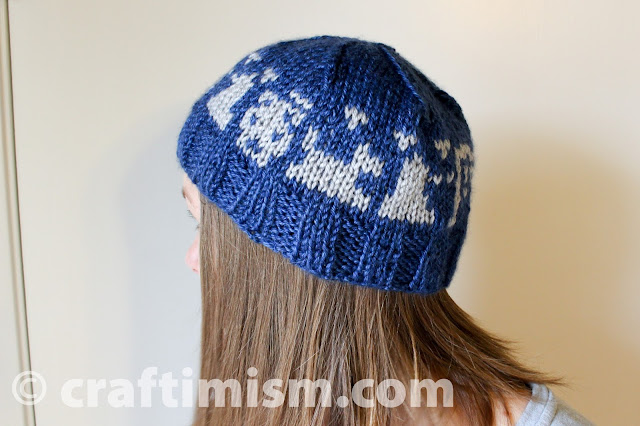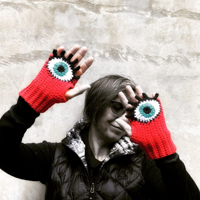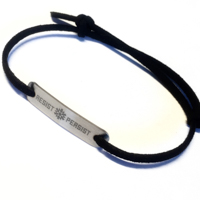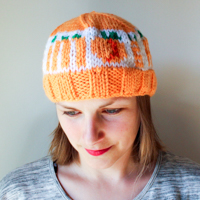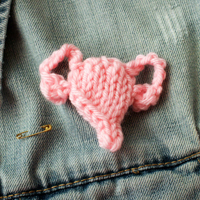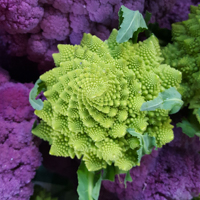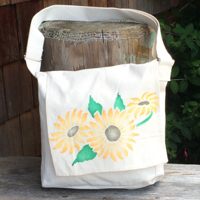
tldr: I am starting the KonMari method's journey of tidying. Yarn brings me a lot of joy. I used Instagram to help define my ideal lifestyle. Scroll down for pretty pictures. :)
The life-changing magic of tidying up
I am going to join
"The life-changing magic of tidying up" bandwagon and try out this method in the coming few weeks. I am viewing this process as a journey/ceremony/ritual of some sort and I cannot wait to get started! For fun, I thought I would share my process with you through my blog.

I definitely have a personality that gets fixated on projects and I can't exactly say what triggered this, but I went to the library last week to check out this along with "Spark Joy: an illustrated master class on the art of organization and tidying up". I nearly bought the book online, but then it seemed ironic to buy a book that I would run the risk of not getting joy out of and choosing to let go during the tidying process. The gist of the method is that you go through each belonging and keep those that elicit joy or happiness and bid a fond farewell to those that do not. I hope this will help free my mind and help facilitate a relaxed, content, and/or creative mood each time that I arrive home. I can
highly recommend both books as I have already implemented a few tips into my daily life. I love how she shares the logic behind her method as well as clearly stating the "right ways" when there are definitive 'evidence supported' ways to store things (i.e. the kitchen should be organized for ease of cleaning up rather than keeping everything at hand, Marie Kondo discovered this after observing several kitchens in restaurants and found this was a common link). As someone who was looking for more of the step-by-step process and who is a more visual learner, I preferred "Spark Joy." However, if you have the time and means, both are delightful books to read and you might as well tackle them both if you are serious about attempting the journey.
I have already been through one informal round of this process. I had heard of the method, but I had not yet read the book(s) so I did not completely grasp the true extent of the wisdom and logic behind the process. When I moved to California in 2015, I used the joy factor to help pare down everything I owned into two checked bags and one carry-on that housed my vintage Kenmore sewing machine and yarn. It was so freeing to own so few items at one time. I moved into my apartment and discovered that I LOVE giving items a second life and having furnishings and household goods that have had a history before me (and getting great deals for much less than I would have paid new). Except for a desk, my couch, and my mattress, pretty much everything in my apartment was found at an estate sale, garage sale, or on Craigslist.
Reconciling my love of crafting supplies with the minimalism movement
As a crafter, I was initially concerned that this minimalism often seems at odds with those who spend significant time (and receive significant joy) from creating. In particular, I love knitting and have one section of my kitchen cupboard full of yarn, which gives me pleasure whenever I open the doors. I also love to sew and have 3 sewing machines (2 vintage) as well as a couple of boxes full of fabric I have accumulated from yard sales. (check out my Instagram, I'll be sharing some "before" photos soon").
While I have not started sorting yet, I love KonMari's
non-judgemental approach. If something brings you joy, keep it and cherish it. So, if all of my skeins of yarn end up bringing me joy, I can gleefully put them in the keep pile and find a home for them in my apartment with no remorse. This method really forces you to be true to yourself and I suspect that is one of the reasons it is so successful.
As an aside, I recently was at an estate sale where a craft room was jam packed with yarn, sewing supplies, and a knitting machine (that I was gifted for free after it did not sell!). I told the woman running the estate sale that I volunteer at a school to teach kids to knit and she donated 3 buckets of yarn to the cause. During our conversation in this crowded room above the trunk full of yarn, the woman running the estate sale commented to me that this woman was quite the hoarder. I was a bit affronted by that as, even though it was the last day of a 3-day estate sale, the rest of the house did not look that cluttered at all and you could tell from the pictures to advertise the sales that the house was not that of a hoarder. Also, although I try to keep my yarn stash in check, I cannot often bring myself to get rid of yarn that has the potential to be whatever I dream up for it! It makes me happy just to sort through my yarn every so often and imagine future projects and dream of a life of leisure where I can create all day whatever comes into my head! I am well on my way to having that much yarn, and I don't consider stocking up on supplies of yarn and fabric as a negative, in the way the word "hoarding" is so often used as.
Step 1: imagine your ideal lifestyle
The first step of the KonMari method is to imagine your ideal lifestyle. She insists that you be quite thorough and deliberate in this process as this will help inform what gives you joy and the end result. To help with this, I took to Instagram and looked through the #interiordesign hashtag to find images that resonated with me. As you can see from the posts below, in general I love well-lit clean, simple, modern styles without much clutter. I also love a touch of traditional elements.
However, my Instagram perusal quickly turned into looking for yarn storage (as that just makes me happy - I browsed the #flashyourstash hashtag for probably 30 minutes with a smile on my face). I have found that I have a much higher tolerance for what some would consider "clutter" when it comes to yarn and crafting and the following photos spoke directly to my heart. To me this makes perfect sense. I can organize your yarn (and I take pleasure in organizing it at least once a year or after any large yarn acquisition) to my hearts delight, but it'll never be perfect, nor should it. I would never want my yarn storage so perfect that I did not want to begin a new project as I might mess up my yarn. I just love it too much to structure it in that way.
See the below posts as examples of what design styles and yarn storage please me the most:























